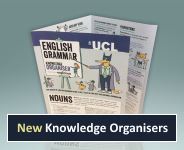Nouns and only nouns
Students are asked to communicate using a bank of nouns - and nothing else.
Goals
- Communicate with a partner using only nouns.
- Discuss what can and can't be easily expressed using only nouns.
- Determine which other types of words are useful for expressing complex ideas.
Lesson Plan
The teacher explains that this activity will involve you trying to express progressively more complicated concepts and actions to a partner using only these words, your own body language and imagination.
Welcome back!

Englicious is totally free for everyone to use!
But you will have to log in to see our library of teaching resources.
If you don’t have an account, that’s perfectly OK. You can register (for free).
It only takes a minute or two.
»
- Printer-friendly version
- Log in to view or leave comments

